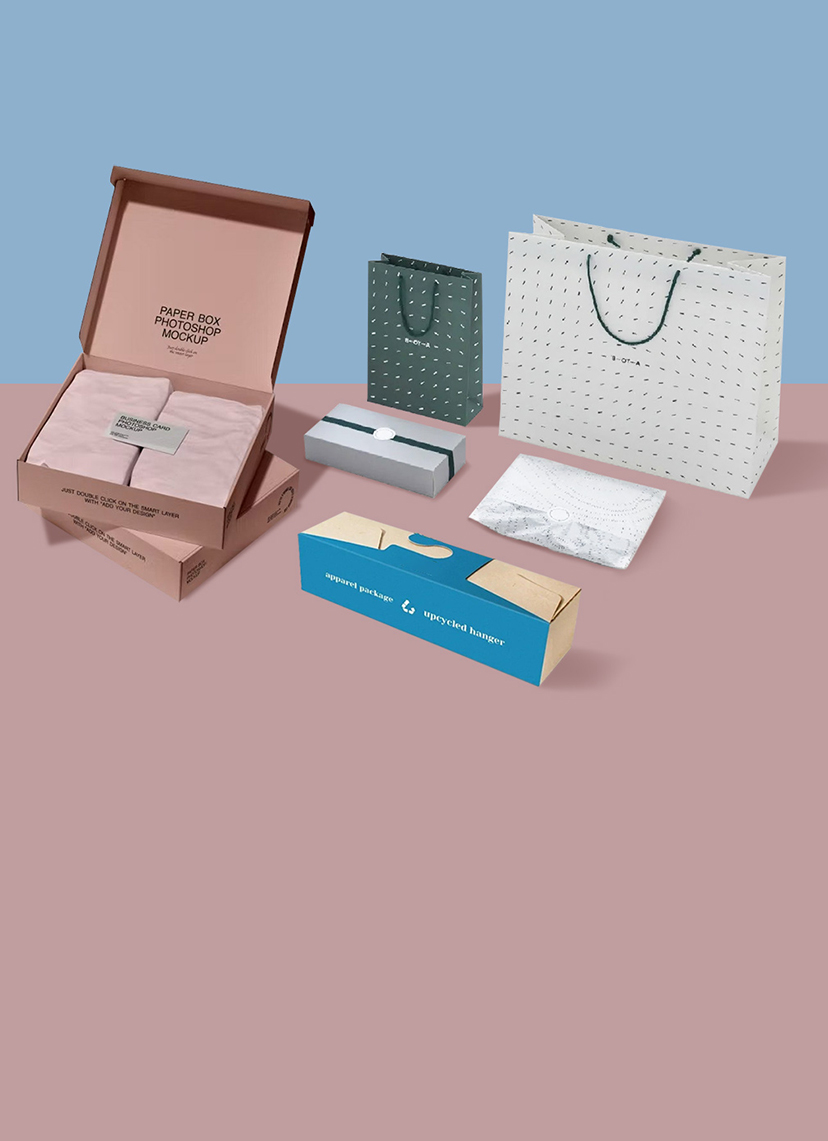
In the ever-evolving world of fashion and retail, packaging is no longer just a functional necessity—it’s a powerful tool that shapes brand identity, influences consumer behavior, and reflects sustainability values. Apparel packaging, in particular, is undergoing a transformation driven by technology, consumer expectations, and environmental concerns.
So, what’s next for apparel boxes? What trends and innovations will define the future of packaging in the fashion industry? In this article, we explore the exciting developments shaping the future of apparel packaging and how brands can stay ahead of the curve.
1. Sustainability at the Core
Sustainability isn’t a fleeting trend; it’s the foundation of the future of apparel packaging. Consumers increasingly demand eco-friendly packaging solutions that minimize environmental impact.
Biodegradable and Compostable Materials: More brands are turning to materials like plant-based plastics, recycled fibers, and compostable paper to reduce landfill waste.
Recyclable and Reusable Packaging: Designing boxes that customers can reuse (like sturdy rigid boxes or drawer-style boxes) or recycle easily will become the norm.
Minimalist Packaging: Brands will continue to strip down excess packaging, using just what’s necessary to protect the garment while cutting waste and cost.
Supply Chain Transparency: Packaging will increasingly include information about the materials used and their environmental impact, allowing consumers to make informed choices.
2. Smart Packaging Technologies
Technology is rapidly reshaping packaging, turning it from a passive container into an interactive experience.
QR Codes and NFC Tags: These will provide consumers with instant access to product details, care instructions, styling tips, or brand stories via their smartphones.
Augmented Reality (AR): Imagine scanning your apparel box and seeing virtual styling ideas, behind-the-scenes videos, or interactive brand experiences.
Anti-Counterfeit Measures: Smart packaging can verify authenticity through embedded chips or codes, helping luxury brands protect their products and consumers.
3. Personalization and Customization
Mass customization is becoming more accessible, allowing brands to tailor packaging to individual customers or special editions.
Personalized Messages: Printed names, thank-you notes, or tailored offers inside the box.
Custom Prints Based on Customer Preferences: Packaging designs that adapt based on customer data, such as favorite colors or style preferences.
Limited Edition Packaging: Seasonal or collaborative packaging that creates excitement and exclusivity.
Personalized packaging fosters emotional connections and enhances brand loyalty.
4. Gender-Neutral and Inclusive Packaging
As society becomes more conscious of gender identity and inclusivity, apparel packaging is moving away from traditional gendered color schemes and messaging.
Neutral Color Palettes: Soft tones, monochrome, or bold color blocking that appeal to everyone.
Inclusive Language: Messaging that welcomes all identities and avoids stereotypes.
Design for Diversity: Packaging styles that work across different product types and customer groups.
This trend helps brands appeal to a broader audience and demonstrate social awareness.
5. Multi-Functional and Reusable Packaging
Consumers love packaging that lives beyond the initial purchase. Future apparel boxes will be designed to have second lives:
Storage Solutions: Boxes that can be repurposed as drawers, organizers, or display cases.
Gift-Ready Packaging: Reusable gift boxes with elegant designs that customers want to keep.
Convertible Packaging: Designs that transform from shipping boxes into something useful or decorative.
By adding value beyond the unboxing, brands increase customer satisfaction and reduce waste.
6. Lightweight and Efficient Design
With the growth of e-commerce, efficient packaging that reduces shipping costs and carbon footprints is critical.
Compact and Foldable Boxes: Packaging that optimizes space during transit and storage.
Lightweight Materials: Innovations in materials science are producing lighter yet durable boxes.
Protective Yet Minimal: Using smart inserts and padding to reduce overall box size while keeping products safe.
This efficiency helps brands save money and reduce environmental impact.
7. Integration of Digital and Physical Retail
With the rise of omnichannel retail, packaging needs to bridge the gap between online and offline experiences.
Consistent Branding: Boxes that look great both in-store and in the mail.
Interactive Features for Retail: Packaging that encourages in-store scanning, sharing, or participation in loyalty programs.
Subscription Box Evolution: Combining apparel packaging with curated experiences that blend physical and digital engagement.
8. Innovative Materials and Finishes
New materials and finishing techniques are constantly emerging to make apparel boxes more attractive, tactile, and eco-friendly.
Plant-Based Inks: Soy or water-based inks that are less toxic and more sustainable.
Textured Finishes: Embossing, debossing, and soft-touch coatings that elevate the tactile experience.
Transparent and Window Packaging: Biodegradable clear panels to showcase products inside the box.
How Brands Can Prepare for the Future of Apparel Packaging
Audit Your Current Packaging: Evaluate materials, costs, environmental impact, and customer feedback.
Invest in Sustainable Materials: Switch to recyclable or biodegradable options where possible.
Explore Technology Integration: Test QR codes or NFC tags on packaging.
Experiment with Personalization: Start small with custom inserts or thank-you notes.
Focus on Customer Experience: Make unboxing a moment your customers remember.
Stay Informed: Keep an eye on packaging innovations and consumer trends.
Conclusion
The future of apparel packaging is dynamic, sustainable, and increasingly interactive. Apparel boxes will continue to evolve beyond simple containers into strategic brand touchpoints that delight customers, protect products, and support environmental goals.
Fashion brands that embrace these innovations early will not only meet consumer expectations but also gain a competitive edge in an increasingly crowded marketplace.


